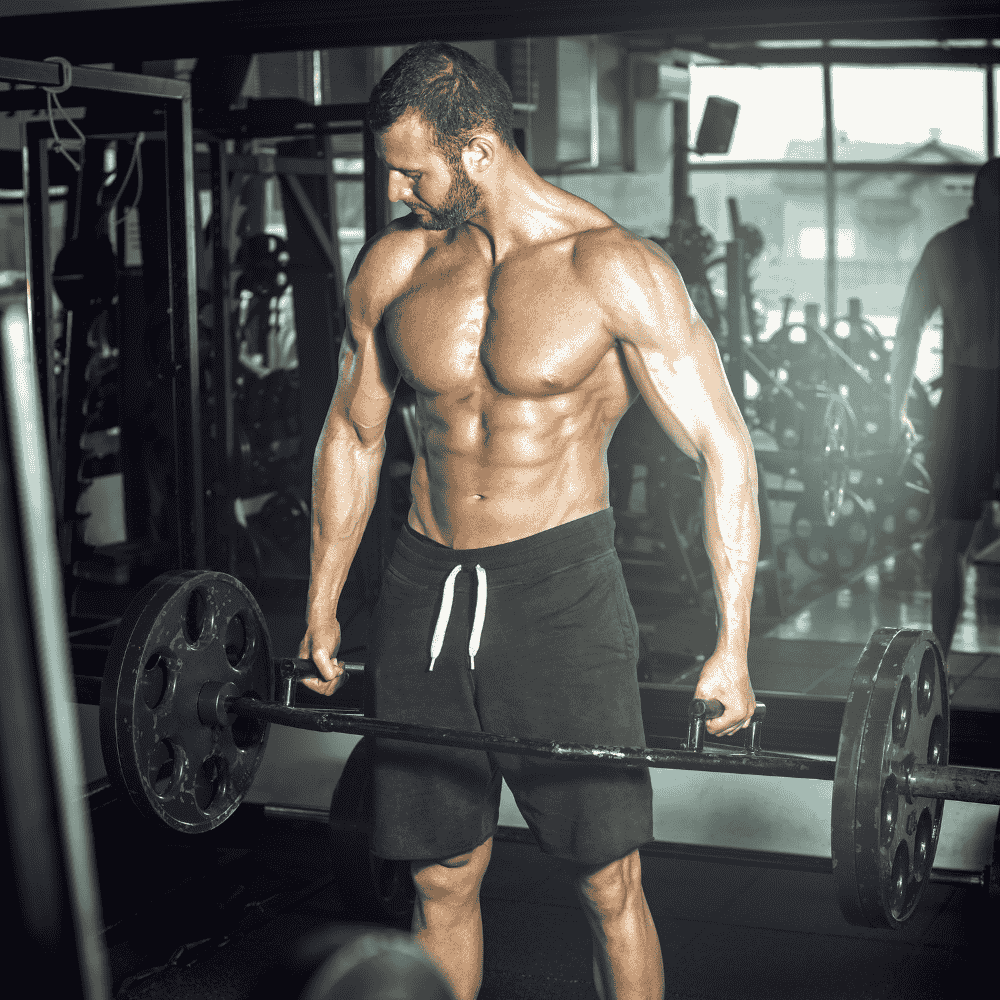The Swiss Bar is one of the most effective yet underrated tools for strength training.
Unlike a traditional straight barbell, the Swiss Bar features multiple neutral grip handles, which help reduce joint strain while still allowing for heavy lifts.
Whether you're recovering from an injury, dealing with shoulder discomfort, or simply looking to add variety to your training, the Swiss Bar is a game-changer.
If you want to maximize your workouts while protecting your joints, here’s how to use the Swiss Bar for bench presses, rows, and other key exercises.
Swiss Bar Bench Press: A Shoulder-Friendly Alternative
The bench press is one of the most popular exercises for developing upper body strength, but for many lifters, it can put excessive stress on the shoulders and wrists.
The Swiss Bar Bench Press provides a more natural grip position, making it an excellent alternative.

How to Perform the Swiss Bar Bench Press:
- Set up as usual – Lie on a flat bench and position the Swiss Bar on the rack.
- Choose a neutral grip – Grip the bar using one of the neutral handles that feels most comfortable.
- Lower the bar under control – Keep your elbows tucked closer to your body rather than flaring them out.
- Press the bar back up – Engage your chest, shoulders, and triceps to press the bar to the starting position.
Benefits of the Swiss Bar Bench Press:
✅ Reduces shoulder strain – The neutral grip minimizes external rotation, making it safer for the rotator cuff.
✅ Increases triceps activation – Keeping the elbows tucked shifts more of the workload to the triceps.
✅ Safer for lifters with past injuries – Ideal for those recovering from shoulder discomfort.
Pro Tip: Try varying your grip width to shift emphasis on different muscle groups. A wider grip will target more of the chest, while a narrow grip will focus on the triceps.
Swiss Bar Rows: Build a Stronger Back with Less Wrist Strain
Rows are crucial for building a strong upper back, improving posture, and enhancing pulling strength.
However, traditional straight bars can sometimes place unnecessary stress on the wrists and elbows.
The Swiss Bar Bent-Over Row solves this by allowing you to pull with a neutral grip, keeping your joints in a more natural position.
How to Perform the Swiss Bar Bent-Over Row:
- Stand with feet shoulder-width apart and grip the Swiss Bar with a neutral grip.
- Hinge at the hips and maintain a flat back as you lower your torso forward.
- Pull the bar towards your torso, keeping your elbows close to your body.
- Squeeze your shoulder blades together at the top, then slowly lower the bar.
Benefits of Swiss Bar Rows:
✅ Targets multiple muscle groups – Engages the lats, traps, rhomboids, and rear delts.
✅ Less strain on the wrists and elbows – The neutral grip allows for a more comfortable pulling motion.
✅ Stronger grip development – Builds forearm and grip strength for better deadlifts and pull-ups.
Pro Tip: Use different grip widths to target specific areas of your back. A closer grip hits the rhomboids and traps, while a wider grip emphasizes the lats.
Other Effective Swiss Bar Exercises
Aside from bench presses and rows, the Swiss Bar can be used for a variety of strength-building exercises.
Here are a few more movements to incorporate into your routine:
1. Swiss Bar Overhead Press
- Pressing with a traditional barbell can sometimes lead to shoulder discomfort, especially if you have limited mobility.
- The Swiss Bar allows for a more natural pressing motion, making it a safer option for overhead work.
- How to do it: Start with the Swiss Bar at shoulder level, press the bar overhead while keeping the core tight and elbows slightly forward.
✅ Benefits:
✔ Reduces shoulder strain
✔ Engages triceps and upper chest
✔ Helps improve pressing strength
2. Swiss Bar Hammer Curls
- Biceps training is essential for both aesthetic and functional strength.
- Using the neutral grip of the Swiss Bar, hammer curls target the brachialis and forearms more effectively than standard curls.
- How to do it: Grip the bar with neutral handles, keep your elbows tucked in, and curl the bar up, focusing on squeezing the biceps at the top.
✅ Benefits:
✔ Builds forearm and grip strength
✔ Reduces wrist discomfort
✔ Engages the biceps from a different angle

3. Swiss Bar Triceps Extensions
- If you want to build bigger triceps, Swiss Bar Skull Crushers or Close-Grip Presses are fantastic options.
- How to do it: Lie on a flat bench, grip the bar with neutral handles, and lower it toward your forehead (for skull crushers) or your chest (for close-grip presses).
✅ Benefits:
✔ Isolates the triceps for maximum muscle growth
✔ Reduces elbow strain compared to traditional barbells
✔ Allows for heavier, safer triceps training
Why Use a Swiss Bar in Your Training?
If you’re looking to build muscle, protect your joints, and improve strength, the Swiss Bar is one of the best investments for your home gym.
Key Takeaways:
✅ Better joint health – Reduces stress on shoulders, wrists, and elbows.
✅ More muscle activation – Allows you to target muscles from new angles.
✅ Versatility – Great for pressing, pulling, and arm movements.
By adding these Swiss Bar exercises to your routine, you’ll enhance your training, prevent injuries, and build strength in a safer, more effective way.
Final Thoughts: Should You Get a Swiss Bar?
If you want to train smarter, lift heavier, and stay injury-free, adding a Swiss Bar to your routine is a no-brainer.
It provides all the benefits of a traditional barbell without the unnecessary joint stress.
At KEFL, we offer high-quality Swiss Bars designed for durability, comfort, and maximum performance.
Check out our collection and start lifting smarter today!
💪 Ready to take your workouts to the next level? Explore our Swiss Bars now!









